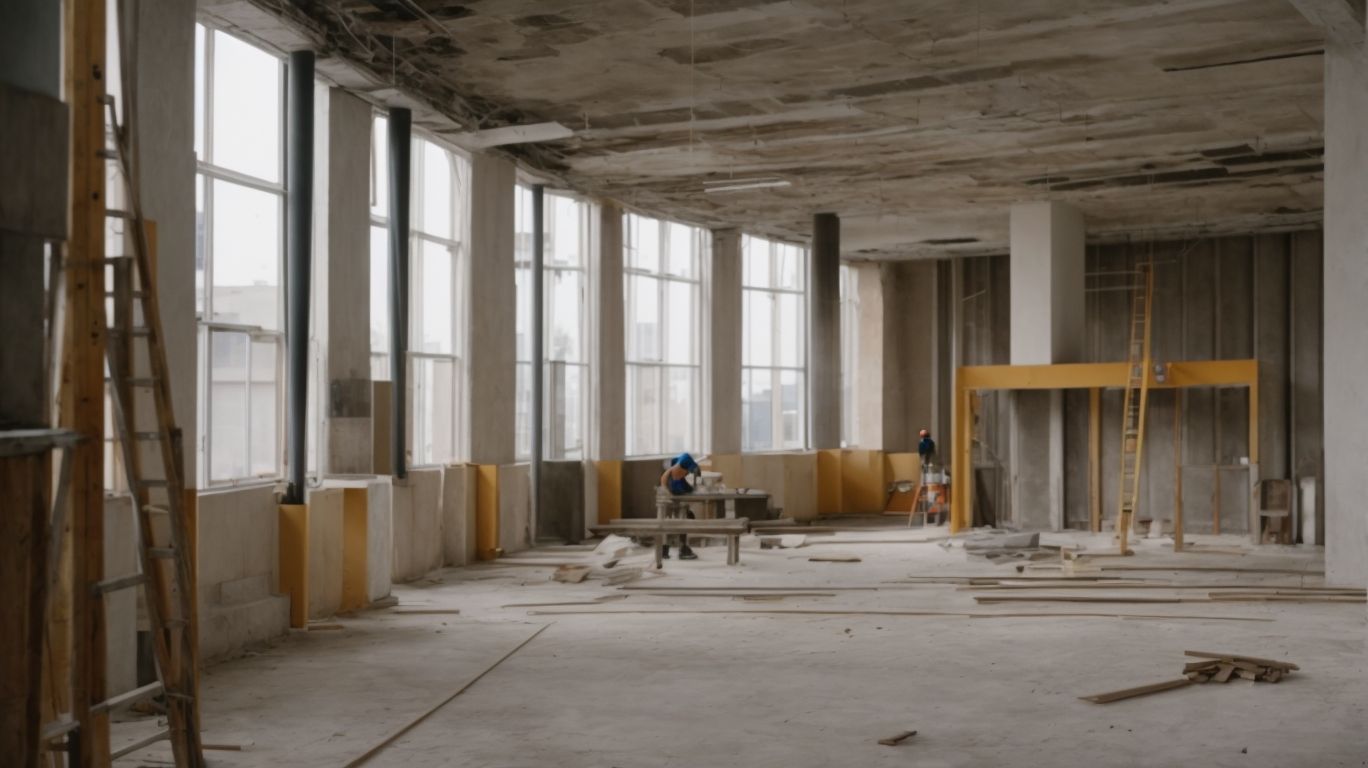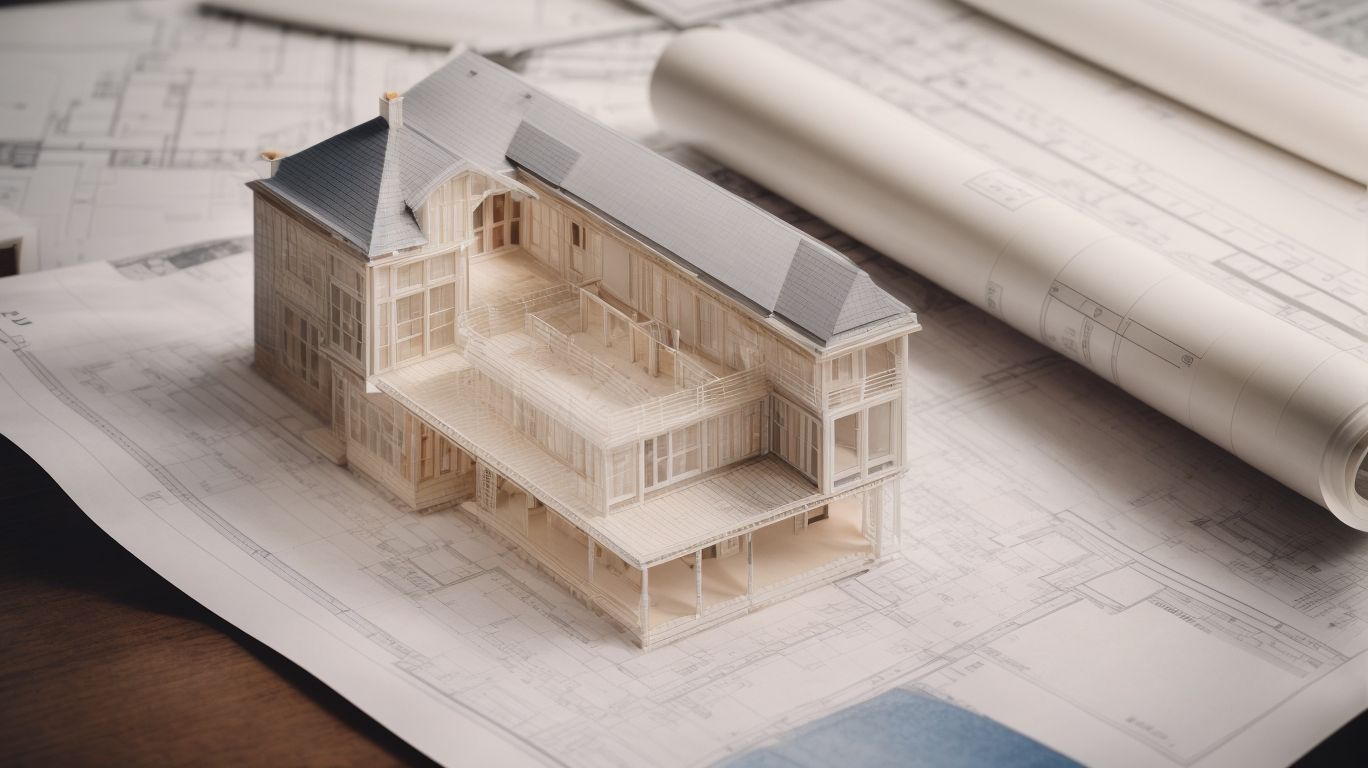
Commercial Building Renovations: The Role of a Structural Engineer
Are you considering renovating your commercial building? Whether it’s to enhance the appearance, improve energy efficiency, or make structural changes, commercial building renovations can offer a multitude of benefits.
In this article, we will explore the different types of commercial building renovations, the crucial role of a structural engineer in the process, and why it is important to hire one. We will also discuss the steps involved in hiring a structural engineer and how they can ensure the safety, compliance, and success of your renovation project.
So, let’s dive in and discover the key aspects of commercial building renovations and the role of a structural engineer in making them a reality.
What Are Commercial Building Renovations?
Commercial building renovations involve the process of making significant changes, improvements, or modifications to the existing structure of a commercial property. This includes aspects such as design, construction, safety compliance, and the use of appropriate building materials.
Renovations are crucial for maintaining the functionality and modernity of commercial spaces, meeting the changing demands of businesses and occupants. It is important to prioritize safety and adhere to building codes to ensure that the renovated space is structurally sound and provides a secure environment.
Choosing suitable building materials is also essential for durability and aesthetic appeal, contributing to the overall success and longevity of the renovation project.
What Are The Benefits Of Commercial Building Renovations?
Commercial building renovations offer numerous benefits, including enhanced project management, improved compliance with building codes, the opportunity for retrofitting, and the optimization of building systems to meet modern standards and requirements.
Renovations can greatly improve project management processes through infrastructure upgrades, new technology integration, and workflow efficiency enhancements.
They also ensure that commercial properties comply with updated building codes, creating a safer environment.
Opportunities for retrofitting allow for the incorporation of sustainable and energy-efficient solutions, reducing operational costs and environmental impact.
Enhancing building systems allows for better control over energy usage, improved indoor air quality, and more effective resource utilization.
These renovations contribute to a more sustainable and efficient commercial building environment.
What Are The Different Types Of Commercial Building Renovations?
Commercial building renovations encompass various types, including exterior renovations, interior renovations, energy-efficient upgrades, and structural modifications, each catering to specific improvement requirements and objectives.
Exterior renovations often involve enhancing the building’s facade, adding new features like windows, doors, or cladding to improve aesthetics and functionality.
Interior renovations focus on transforming the internal space, optimizing layouts, and updating finishes to create a more appealing and functional environment.
Energy-efficient upgrades prioritize sustainable solutions, such as insulation, lighting, and HVAC systems, reducing energy consumption and operational costs.
Structural modifications address the building’s foundation, framework, or load-bearing components, ensuring safety, stability, and compliance with building codes and regulations.
Exterior Renovations
Exterior renovations for commercial buildings involve alterations to the outer structure and aesthetics, requiring adherence to building codes, obtaining relevant building permits, and addressing foundation-related considerations for the proposed changes.
Renovations are essential for improving the appearance and functionality of commercial buildings. Safety and structural integrity should be top priorities, and compliance with building codes and regulations is crucial. Obtaining proper building permits is necessary to ensure legal requirements are met.
Before beginning renovations, a thorough assessment of the building’s foundation should be conducted to identify any underlying issues that could affect the success of the project.
Interior Renovations
Interior renovations for commercial buildings involve the modification of internal spaces. This necessitates comprehensive construction documentation, thorough site assessments, and the optimization of building systems to accommodate the proposed changes.
This process starts with meticulous documentation to outline the structural, mechanical, and electrical specifications. This ensures that the renovations align with building codes and regulations.
Site assessments are crucial in understanding the existing conditions and potential challenges that may arise during the renovation process. Adapting building systems, such as HVAC and lighting, to suit the new layout and design is essential for creating a functional and efficient space that meets the client’s needs.
Structural Renovations
Structural renovations involve the expertise of a structural engineer, meticulous renovation planning, assessment of load-bearing elements, and the implementation of necessary structural modifications to ensure the integrity and safety of the commercial building.
Renovations often involve making changes to a building’s structure, which requires a thorough understanding of its current state. This is where a structural engineer comes in, conducting initial assessments and developing detailed plans to address any potential weaknesses. Load-bearing elements, like beams and columns, must be carefully evaluated to ensure they can handle the increased loads resulting from the renovations. It’s crucial to follow strict engineering standards when implementing structural modifications to ensure the building remains stable and durable in the long run.
Energy-Efficient Renovations
Energy-efficient renovations focus on aligning commercial buildings with modern construction standards, involving accurate cost estimation and the implementation of sustainable practices to achieve energy-efficient outcomes and compliance with industry standards.
This approach ensures that buildings are not only structurally sound but also optimized for energy efficiency, leading to cost savings and reduced environmental impact.
By integrating sustainable practices such as using energy-efficient appliances, advanced insulation, and renewable energy sources, these renovations contribute to a greener and more sustainable future for commercial properties. The accurate cost estimation allows for budgeting and planning that align with the long-term benefits of energy efficiency, making it a prudent investment for building owners and operators.
What Is The Role Of A Structural Engineer In Commercial Building Renovations?
The role of a structural engineer in commercial building renovations is pivotal, encompassing responsibilities such as assessing the structural integrity of the building, designing necessary structural changes, conducting inspections, and coordinating renovation projects to ensure compliance and safety.
Structural engineers play a crucial role in evaluating the existing structural conditions of commercial buildings. They identify areas that require enhancement or modification to meet current safety standards and building codes.
Using their expertise, they develop detailed plans and specifications for structural alterations. This includes considering factors such as load-bearing capacity, stability, and resilience.
Additionally, structural engineers conduct meticulous on-site inspections to verify the implementation of proposed changes. They also monitor the progress of renovation work to ensure that the structural modifications are executed accurately and in accordance with the approved designs.
Assessing The Structural Integrity Of The Building
Assessing the structural integrity of the building involves in-depth structural analysis, comprehensive evaluation of building systems, and the execution of precise structural assessments to identify potential areas for renovation and enhancement.
This process begins with a structural engineer examining the building’s architectural plans and materials to ensure they meet safety standards and can withstand various forces. The engineer then evaluates the stability of the foundation, analyzes the load-bearing capacity of the structure, and inspects the integrity of key building components such as beams, columns, and connections.
The assessment encompasses a detailed examination of the building systems, including electrical, plumbing, and HVAC, to ensure they are functioning optimally and do not compromise the structural stability.
Designing Structural Changes
Designing structural changes involves the expertise of a structural engineer in formulating comprehensive structural designs, implementing retrofitting solutions, and overseeing necessary structural modifications to align the building with modern standards and requirements.
The primary role of structural engineers is to analyze the existing structure, assess its integrity, and develop detailed plans to strengthen or modify the building. This process involves a deep understanding of the building’s load-bearing capacity, material properties, and potential stress points.
Integrating retrofitting solutions also requires a keen eye for innovation and sustainability, as the engineer aims to enhance the structure’s resilience while minimizing environmental impact.
Overseeing the execution of these design changes ensures that the modifications align with regulatory standards and safety protocols, guaranteeing the structural integrity of the building.
Obtaining Necessary Permits
Obtaining necessary permits for commercial building renovations requires the expertise of a structural engineer to ensure compliance with regulatory standards, secure renovation approvals, and facilitate a seamless approval process for the proposed structural modifications.
The structural engineer plays a crucial role in managing building permits. They conduct thorough assessments and structural evaluations to ensure compliance with building codes and safety regulations. Their expertise helps streamline the approval process by providing detailed project plans and technical specifications. These demonstrate compliance and safety measures, reducing the risk of delays or complications during renovation activities. This proactive approach leads to a successful and compliant renovation project.
Overseeing Construction Process
Overseeing the construction process in commercial building renovations involves the active participation of a structural engineer in renovation supervision, conducting meticulous building inspections, and obtaining professional certifications to validate the structural integrity and safety of the modified building.
The structural engineer plays a crucial role in ensuring that the renovation process adheres to building codes and safety standards. They are responsible for assessing the structural soundness of the existing building and identifying any potential risks or areas that require reinforcement.
The engineer provides expert recommendations for addressing any structural deficiencies and collaborates with other construction professionals to implement necessary modifications. They also ensure that the renovated structure meets all regulatory requirements and certifications.
Why Is It Important To Hire A Structural Engineer For Commercial Building Renovations?
Hiring a structural engineer for commercial building renovations is crucial as it ensures safety and compliance, saves time and money, and provides invaluable expertise and experience to navigate the complexities of structural modifications and integrity assessments.
Structural engineers are essential in evaluating current structural components and guaranteeing compliance with local building codes and regulations. With their extensive experience, they can anticipate potential obstacles and offer creative solutions to streamline the renovation process. Their involvement can result in cost savings by optimizing materials and construction techniques, all while maintaining the building’s structural integrity. In the end, their expertise greatly contributes to the smooth and successful completion of commercial building renovations.
Ensures Safety And Compliance
The involvement of a structural engineer ensures safety and compliance in commercial building renovations. This guarantees adherence to building safety standards, secures renovation approvals, and mitigates potential safety risks associated with structural modifications.
The expertise of structural engineers is crucial in the inspection and analysis of existing structures. This ensures that proposed modifications do not compromise the building’s integrity. They also play a vital role in recommending suitable materials and construction methods that meet safety requirements and withstand environmental factors.
Working closely with architects and construction teams, structural engineers evaluate design plans and offer valuable insights to optimize structural stability and safety. Their integration into the renovation process significantly contributes to creating secure and sustainable commercial spaces.
Saves Time And Money
The involvement of a structural engineer in commercial building renovations helps save time and money through efficient project management, streamlined budget management, and accurate cost estimation for the proposed structural modifications and enhancements.
The expertise of a structural engineer guarantees a smooth progression of the project, avoiding delays and costly reworks.
By accurately assessing the structural requirements, they help optimize the budget, allocate resources effectively, and minimize wastage.
Their precise cost estimation for structural modifications prevents budget overruns, ensuring the project stays within defined financial parameters.
Hiring a structural engineer is a wise investment that brings comprehensive benefits to commercial building renovation projects.
Provides Expertise And Experience
A structural engineer offers invaluable expertise and experience in commercial building renovations. They provide structural consulting, conduct comprehensive structural evaluations, and obtain professional certifications to ensure the successful implementation of structural modifications.
Their vast knowledge enables them to analyze existing structures and assess their load-bearing capacities. They also recommend suitable modifications to meet safety and compliance standards.
Their expertise in obtaining certifications ensures that all structural changes adhere to regulatory requirements and industry standards. With their extensive experience, they navigate the complexities of structural modifications with strategic planning and precision, guaranteeing the long-term stability and integrity of the buildings they work on.
What Are The Steps Involved In Hiring A Structural Engineer For Commercial Building Renovations?
Hiring a structural engineer for commercial building renovations entails crucial steps such as conducting thorough research, seeking recommendations, initiating an initial consultation, and formalizing a comprehensive proposal and contract for the renovation project.
Researching potential structural engineers is the first step in this process. You can check professional organizations, online directories, and review websites to gather a list of candidates.
Seeking recommendations from colleagues or business partners who have undergone similar projects can provide valuable insights. Once you’ve identified potential candidates, scheduling initial consultations is essential to discuss the project scope, timeline, and budget.
After finding a suitable engineer, formalize the proposal and contract to solidify the terms and conditions of the renovation project.
Research And Recommendations
The initial step in hiring a structural engineer involves conducting thorough research and seeking recommendations to identify qualified professionals with the requisite expertise, professional certifications, and a strong understanding of building codes and compliance standards.
Structural engineers are essential for maintaining the safety and integrity of buildings and infrastructure. When researching potential engineers, it’s important to consider their certifications, such as Professional Engineer (PE) licensure. It’s also crucial to ensure they have expertise in both local and international building codes and regulations, as this showcases their ability to navigate complex compliance requirements.
By prioritizing these criteria, clients can confidently hire structural engineers who can provide high-quality and compliant designs for their projects.
Initial Consultation
After identifying potential candidates, the next step involves initiating an initial consultation with the selected structural engineers. This phase is crucial as it sets the tone for the entire collaboration.
Focusing on effective client communication, comprehensive site assessments, and discussions related to budget management for the renovation project is essential for a successful outcome.
Effective client communication lays the foundation for understanding the client’s vision and requirements. This allows the engineers to tailor their approach and ensure the client’s needs are met.
Comprehensive site assessments allow the engineers to gather essential data and assess any challenges that may impact the project. This ensures that all aspects of the renovation are carefully considered and planned for.
Simultaneously, discussing budget management ensures that the proposed plans align with the client’s financial expectations. This makes the entire process transparent and sustainable, avoiding any unexpected costs or delays.
Proposal And Contract
Upon successful consultations, the subsequent step involves formalizing a comprehensive proposal and contract with the chosen structural engineer, focusing on detailed construction drawings, permitting requirements, and project management aspects for the renovation endeavor.
This process typically entails a thorough review of the construction drawings to ensure that they align with the project specifications and local building codes. Consideration of permitting requirements is crucial to secure necessary approvals for commencing the construction activities.
The contract should clearly outline project management details, including timelines, milestones, and responsibilities, to facilitate a streamlined execution of the renovation project in collaboration with the selected structural engineer.
Project Execution
The final step involves the seamless execution of the renovation project in close collaboration with the structural engineer, addressing essential aspects such as seismic upgrades, securing renovation approvals, and proficient project coordination to achieve successful structural modifications.
This critical phase requires the structural engineer to assess the existing structural framework and devise effective seismic upgrade solutions to ensure the building’s resilience to potential seismic events.
Simultaneously, navigating through the renovation approval processes becomes crucial, involving thorough documentation and compliance with building codes and regulations.
Effective project coordination plays a pivotal role in ensuring that all stakeholders are aligned, timelines are met, and resources are optimally utilized throughout the project execution.




No Comments